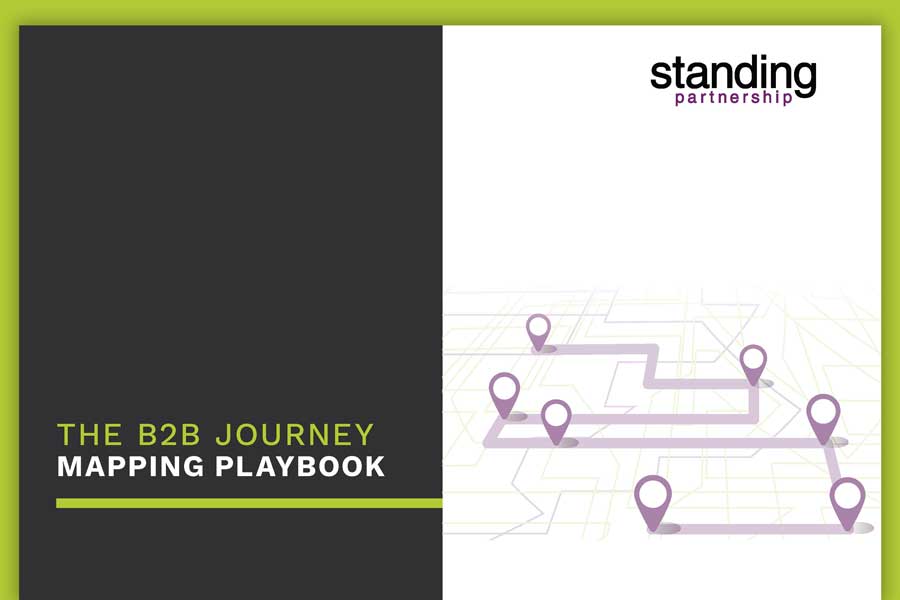5 Ways Cx Strategy Goes beyond Customer Service
A customer's experience should encompass more than assistance and support. It requires awareness, connection, and understanding of the complexities of their buyer's journey. Here's why Cx Strategy extends beyond customer service.
Let’s set the record straight. Customer Service is not Customer Experience (Cx).
It might feel instinctual to think of customer call centers as the focal point of Cx strategy because that’s where experience problems can first show up in business. But they’re not the same.
It’s true that customer service handles the broadest range of touchpoints, but the customer journey is more complex than assistance and support. Cx strategy focuses on every critical moment during the lifetime of customers’ relationships with a business, from awareness through loyalty. How customers feel and perceive the brand, buy and use products or services, and the direct and indirect actions of all employees in an organization are the elements that makeup Cx.
Here are five of the ways Cx strategy goes beyond customer service:
1. Cx strategy is more than advice and assistance when things go wrong.
Cx strategy is broad and proactively focused on the entire customer journey, while customer service is geared more to narrow and reactive engagement when things go wrong.
The role of Cx strategy is to invent ways to anticipate customer desires and needs in the offering and head off problems that they cannot control. With Cx, problems are proactively eliminated through design solutions. Invoicing, substitutions and delays in receiving an order are all common pain points. Be proactive by including content about out of stock products, comparisons and substitutions, and access to self-service remedies and Customer Service Representatives (CSRs) when direct, human help is desired.
2. Cx ownership spans all departments and levels of management.
Customers demand an effortless experience with a brand, and a frictionless experience requires everyone in an organization to deliver. Customer Service is only one part of it.
Cx improvement responsibilities are often distributed between marketing, sales, and customer service leaders who focus on the parts of the customer journey they control. Unfortunately, accountability often comes with little collaboration from other company functions. This lack of visibility and support creates gaps in the experience, making customers feel like they have a different experience at each stage of the process.
Executives must make the customer experience the business strategy and empower customer-centered culture. Do this by mandating silo-less Cx. This is done by getting every business department on the same page – sharing customer knowledge, delivering a consistent brand message, focusing on the journey versus single transaction — by collaborating on solutions that satisfy customers at every stage in the customer journey.
3. Cx strategy views Customer Service as a competitive asset, not an expense.
Companies that view customer service as a cost center rather than a way of improving competitive advantage are leaving a lot of opportunity on the table. Cx up-ends the traditional approach of measuring call center success on efficient problem solving and replaces it with revenue-generating activities that ask, “what experience should our customers have?”
Start by teaching CSRs to apply sales-like tactics, like upselling and cross-selling. Other tactics include offering freebies, giving proactive support during trial-periods (i.e. explaining features, sharing links to webinars, etc.) or sharing deep product knowledge when customers ask questions about comparisons and decisions support Cx.
CSRs also should share their first-hand knowledge of customer preferences, emotions, and behaviors. These provide critical insight to Cx strategy no one else in the company likely knows. Give CSRs opportunities to contribute to improving policy and process, product design, customer onboarding and training, and recommending marketing events or campaigns in email and phone calls. These are proven ways customer service can operate as a revenue-driver to support Cx and retention.
4. Cx strategy is about creating life-long relationships, and CSRs play a key role.
Cx strategy is directly linked to whether a customer continues to do business with a brand or chooses a competitor. A brand with the best product features, benefits, convenience and price, still risks churn if it jeopardizes customer trust. Cx is where trust begins and ends. Research indicates customers are quick to leave after one bad experience.
Building trust requires building a customer-connected organization, understanding customer emotion behind pain points and continually and continuously working to improve the cycle as things evolve. Do this by proactively building in transparency and honesty into the customer journey and meeting customers on their own terms.
CSRs play a role in building trust too by consistently and patiently explaining why they can’t or what they can do when things go wrong. Every aspect of Cx strategy plays a role in fostering a relationship.
5. Cx strategy checks the reality of “need to exceed.”
Do you remember the last time a brand exceeded your expectations?
Most brands strive to exceed customer expectations, usually by wowing the customer. But research indicates brands focused on becoming “easier to do business with” deliver similar economic value in retention. That largely can come getting better at the basics – simplifying the standard steps everyone needs to take as a customer.
Do this by understanding your customers’ expectations at critical moments in their journey. Delight them with ease of their experience. Customers expect quality first, then speed.
Make sure you’re Measuring Customer Effort Score (CES), a one-sentence microsurvey presented at the end of critical moments in the journey (i.e., onboarding). Improving these real time metrics will reflect elsewhere like Net Promoter Score (NPS), Satisfaction (CSAT), customer value (LTV) and revenue.
Conclusion
Cx strategy goes beyond the customer service department in many ways. Understanding customers requires regularly connecting with them. Start with defining the value of each customer (LTV) and their customer journey. Then, find ways to continuously make improvements that make it easier for them to do business with your company.

